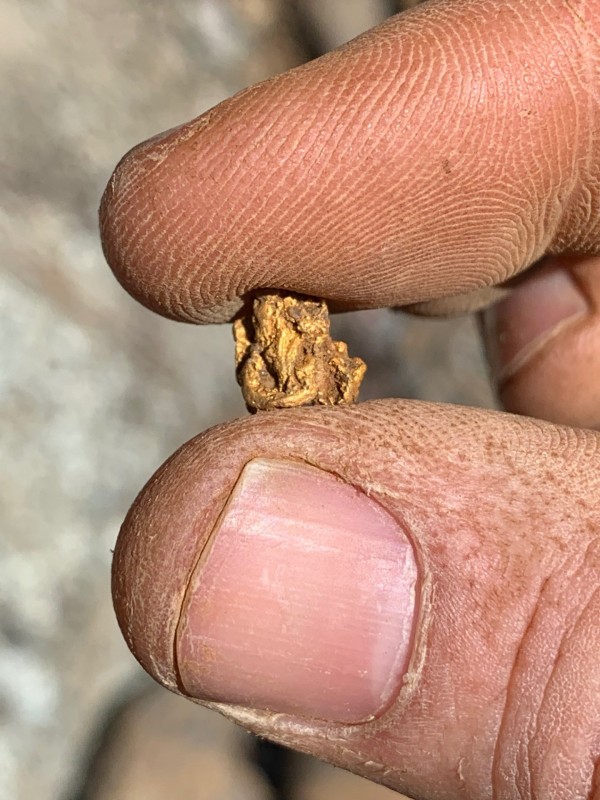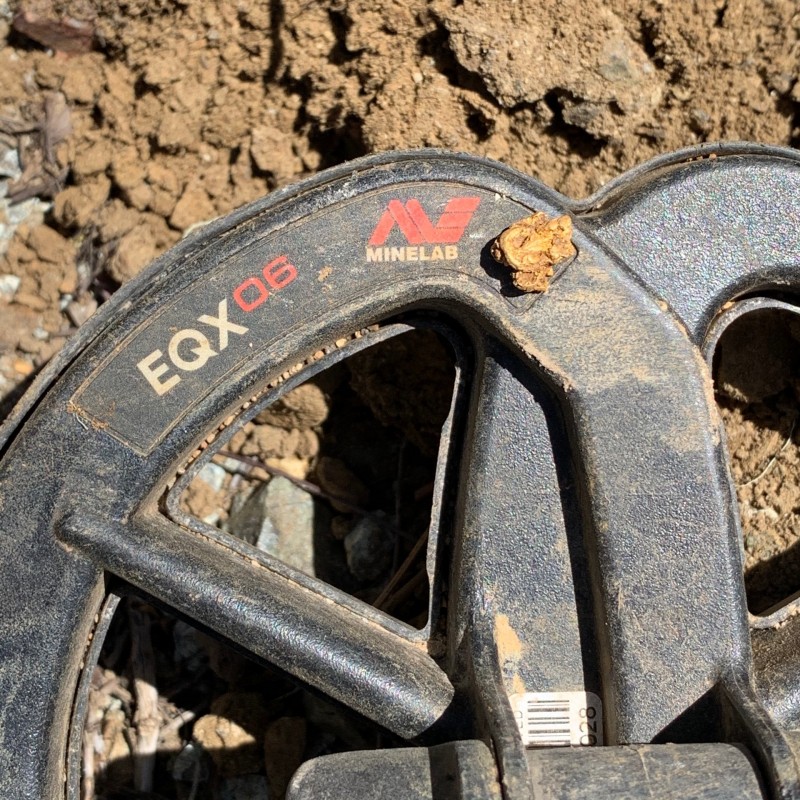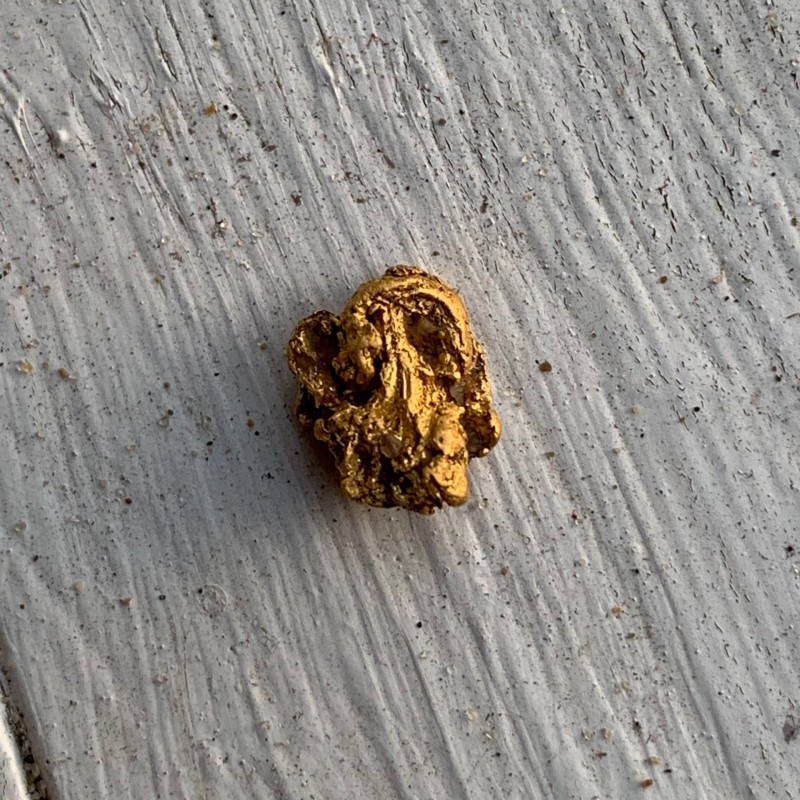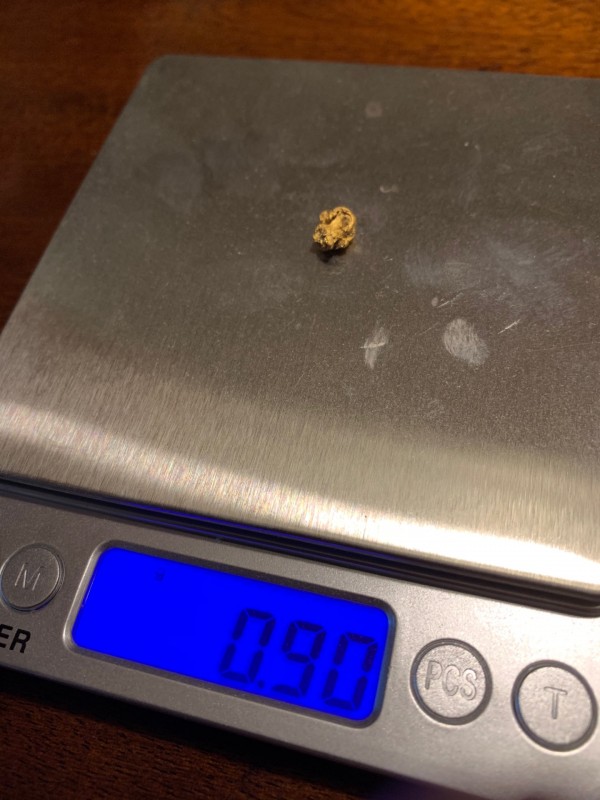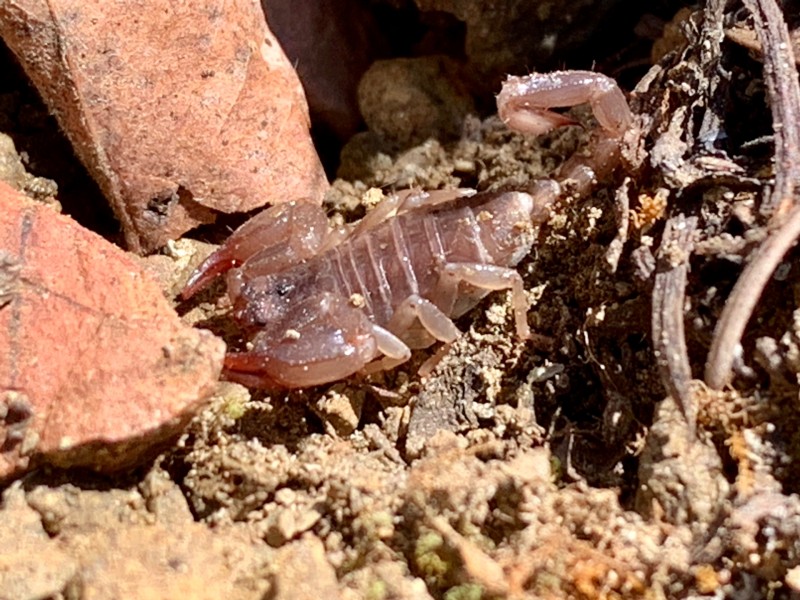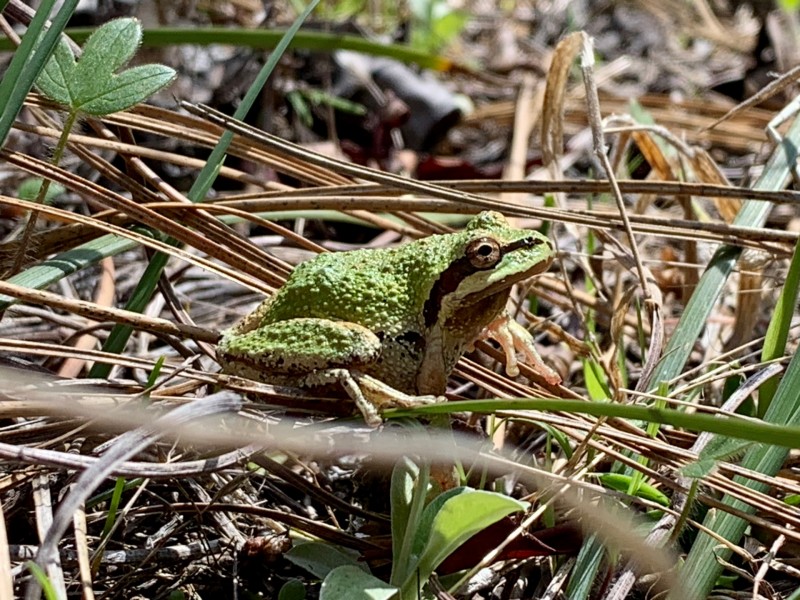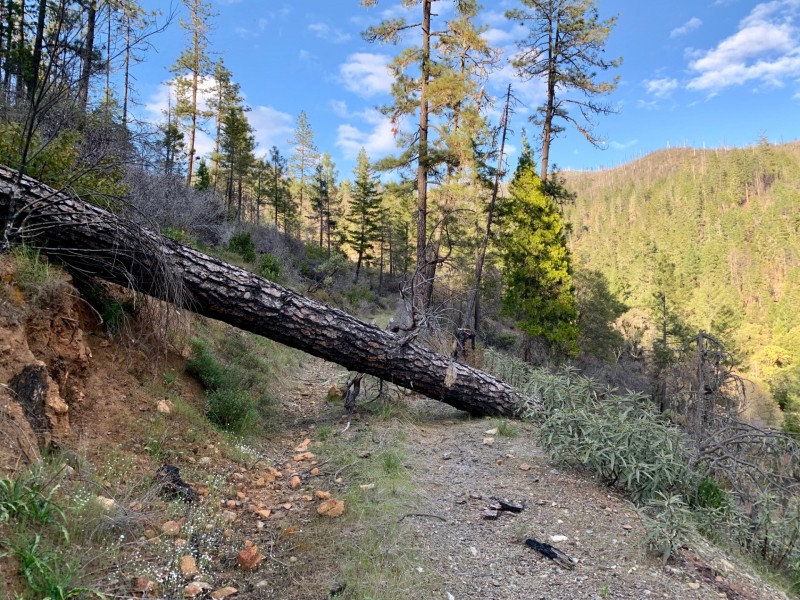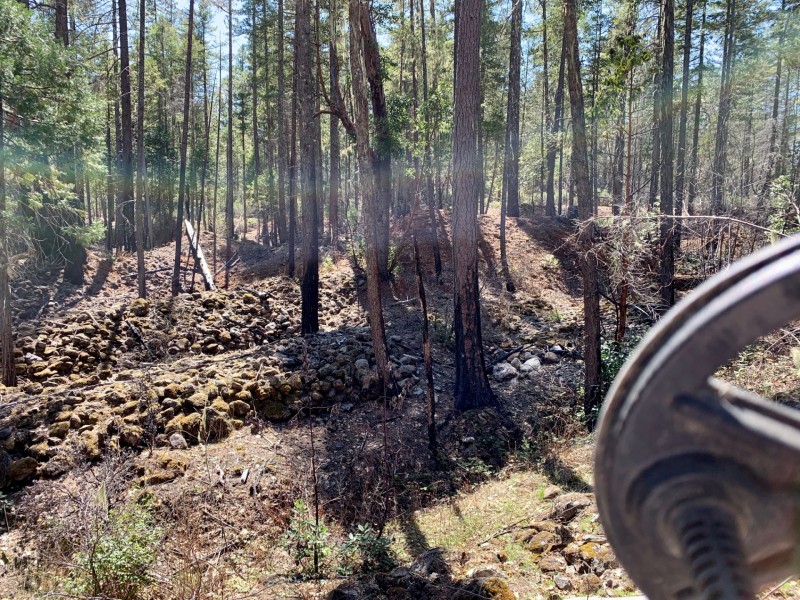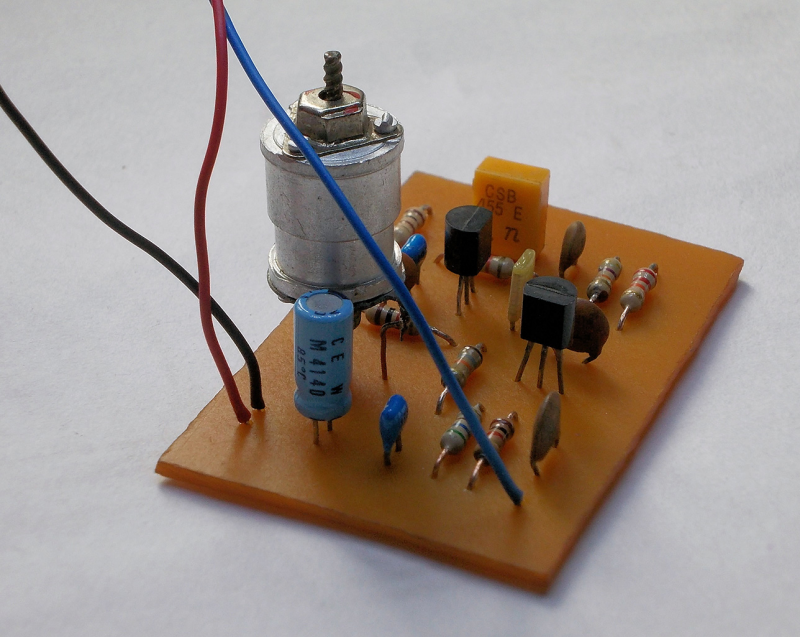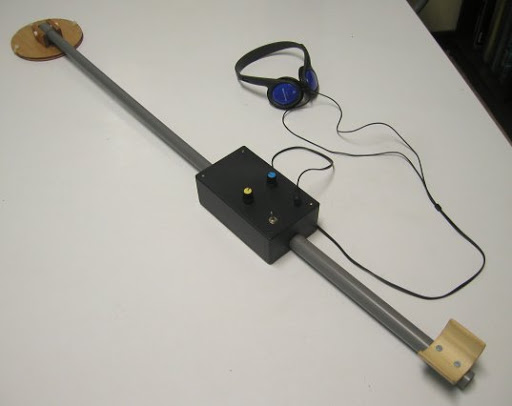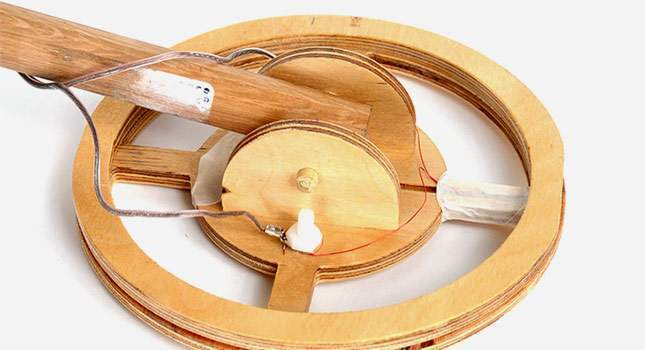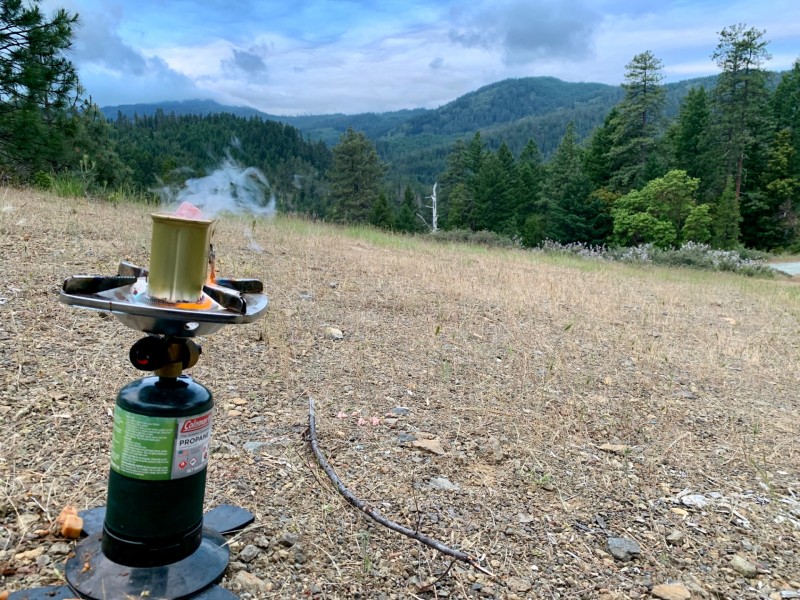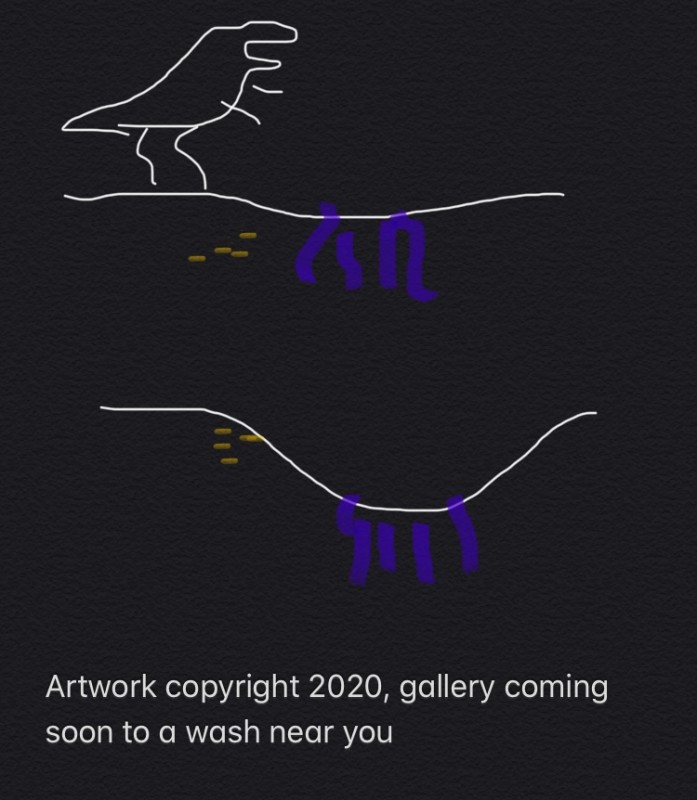-
Posts
595 -
Joined
-
Last visited
-
Days Won
11
Content Type
Forums
Detector Prospector Home
Detector Database
Downloads
Everything posted by tboykin
-
Steve I have been using VLF's to find gold for only four years, but I hunt wooded areas a lot. You have to be willing to do more research, dig more holes, and work harder than the other guys. Every time I've been lazy I walk away with less gold. If the spot is hard to get to, trashy, or requires moving overburden I have a better chance. Most people are lazy, or older, or too out of shape to clear off a few hundred square feet of good ground to detect or even hike a few miles uphill to get to the good spots. They want a place they can drive right up to, get out and in ten feet find nuggets on the surface. Or places accessible to side by sides or quads. Go where they can't go! While placer gold is often found on bedrock, you can also find pocket gold with a VLF. Most of the pieces I've found in the past two years have been pocket gold, from eroded veins exposed by soil depletion and erosion. If you are looking for placer gold you will do best by finding areas with about 4-8 inches of hard pack or overburden on top of bedrock. Shale, slate, or serpentine with vertical orientation is a natural gold trap. For old workings make sure to check their tailings, and keep in mind they were either classifying or hand stacking muddy rocks. Mud can trap gold and after 150 years of rain some gets washed out. Similarly, specimen gold would sometimes roll all the way down their long toms or sluices since it was too light to get caught in the riffles. So check where the sluice dumped out. Also check the edges of the workings where the giants couldn't wash, or they just stopped the work. Tree roots, islands of unworked material, and crevices may hold nuggets. But they also hold a lot of trash. River bottoms can be tough for VLF's since the bedrock is often hot. So I usually look for places with just enough original overburden to give me a buffer as well as possibly hold some nuggets. When I first started detecting for gold I dug about 200 pieces of trash per nugget. I have a few ounces now but I still dig about 50-75 pieces of trash per nugget. That's the nature of it I guess.
-
I found this on a quick adventure in between jobs. It’s the prettiest nugget in my collection. Weighs under a gram but man it was fun! I found that running the EQ800 in single frequency really helped stability in this red hot ground. Here it is fresh out of the ground. On the 6 inch coil which helped me get between boulders to find it. After some toothbrush action almost looks like one of the 50 fired bullets I found today. But I’ll call it a flowing hair nugget instead. Maybe the coin shooters will let me hunt with them. Weigh in on the cheapo scale. Wasn’t wearing gloves because I’m no Nancy boy. But maybe I should have been. I think there was a parable about the guy above and his friend. It’s ok I needed the exercise anyways. But next time I’ll bring my big saw just in case. Hand stacked rocks are sometimes a good sign. The poison oak was in bloom, the air was sub freezing, and the square nails and bullets were practically jumping out of the ground. But hey I got a cool piece of gold, paid for my gas and got some threshold meditation in so it’s a win win for me.
-
High impedance cans require more power than most wireless solutions can give. And to be honest high impedance headphones for what amounts to beeps and zips is overkill. A good set of low impedance ones will give you everything you need. I think a lot of what people like about using a powerful amp with high impedance headphones comes down to volume. Louder is better! I use high impedance headphones for critical audio engineering work. For a simple sine wave beep I would put them in the same category as dowsing rods.
-
I think that will depend on lumber prices and also when engineering wraps up the project. They're working on it 24/7 from what I could tell... 24 hours a month, 7 months a year. Maybe I will get a pass since I worked for one of them before I retired. I know the info is preliminary but I felt it was my duty to share. I think my NDA is expired now.
-
4-1-21, EL PASO, TX. - FOR IMMEDIATE RELEASE- Consolidating the former "Big Three" of metal detecting (Fisher, Garrett, and remnants of White's Electronics) into one cohesive engineering force, the United States manufacturers are aiming to put themselves back on the map with a brand new detecting technology. With Minelab leading technological developments in metal detecting for the past two decades, U.S. companies have struggled to meet the performance benchmarks set by the Australian company. In recent years we have even seen companies that in the past, took the crown of metal detecting, be pushed aside as they were run into the ground by poor leadership or unmanaged engineers who struggled to complete projects. Sources say that this strategic alliance was formed sometime in 2015, when the GPZ 7000 was released and it became clear that Minelab threatened to dominate the world detecting market. Luckily these companies had such great foresight to meet that challenge. "We're really excited to share this technology with the world," said engineering manager Gerhard Fischar. "This new platform has the potential to revolutionize metal detecting for customers across the planet." The new patents show that this unique process involves feeding two oscillators through a low pass filter. This signal is then transmitted into the ground through a coil, which is able to pick up shifts in one oscillator, creating an audible tone for the treasure hunter. Recent FCC filings have revealed some detailed photos, drawings, and specs which follow below. Main circuit board photo, showing sophisticated layout of major components and groundbreaking design: Mechanical design, featuring organically-sourced components and easy-to-operate controls: Detail photo of metal detector coil (NOTE: this is a production model, not a prototype): To release this new detecting technology to the world, the Garrett arm of the company plans to use its marketing muscle and get the machine into the hands of respected YouTube personalities across the world. Steve Moore, director of marketing, said "We've already taken this turn-on-and-go detector out to some civil war sites, and I tell you what, this machine can hunt. Now I won't say who it was, but one of our more popular testers found a shot shell on their first hunt, and seeing that video footage in 4k with all of SUBSCRIBE NOW notifications will make you a believer. And I am pretty sure it wasn't even planted this time." Our office reached out to Minelab about this new competition, a receptionist advised that the engineering and marketing teams were out "crushing tinnies" and unavailable for comment at the moment. An unnamed source provided information on specs of this new detector, which follow below. Name: "RELICMASTER BF-Pro PLUS MAX F97" Price: $849.99 MSRP, $459.83 MAP, $34.21 eBay Weight: 6.7 lbs Technology: Differential Dual-Osc-Sense™ Frequency: 80kHz Batteries: D Cell (12) Runtime: 23 minutes Coil Type: Concentric, 3/4" Plywood Waterproof: IP23 rated, can withstand tears from crying and lint from extended closet stays Release Date: April 2026 Manufacturing Location: Juarez, MX We'll be following up on this exciting development as it looks like the USA is back on the map when it comes to metal detecting.
- 18 replies
-
- 27
-

-

-
The fact is that you sell where you can make the most profit. Africa and other emerging markets like Brazil, Mongolia, and SE Asia have little mining regulations, and lots of undiscovered gold. Think of taking a GPZ to the Sierras in 1840. Yes, that level of gold rush is happening in these areas of the world. I got to see it first hand when I worked for White's. So if it was your company, would you ship dozens of 40 foot conex containers to Africa and Brazil, where the detectors will sell for 2x retail, or send 100 units to the US for retail? It's an easy choice. Maybe even a SMART choice if making money is your goal. The US and AUS prospecting markets are crumbs compared to the rest of the world. It's a hobby, and the easy gold is gone. Compare that to Africa where you can make a living by panning with your bare hands, and nuggets in the kg range are easier to find.
-
GPX 6000 Replaces GPX 5000?
tboykin replied to Steve Herschbach's topic in Detector Prospector Forum
Check this patent out, which I believe is for the GPX6000. There are a couple things to take from this, one of which is that the "sensitivity" control affects multiple detector settings (gain + ground cancellation, and likely some DSP stuff like audio smoothing/threshold settings). The more interesting patent to me is this one, which presents a possible way a GPZ (or "P.I.-like signal") could be further developed to discriminate. Here is an excerpt (prior art refers to past patents): While the prior art offers a form of discrimination, the present invention offers an alternative. In particular, the present invention is a discrimination method that is insensitive to the signals from both resistive and reactive signal components from the soil. It was discovered for the purpose of the present invention that the presence of resistive signal components from the soil may be confused with resistive signal components from metallic targets, and thus identifying the time constant spectrum of the metallic target yields in unsatisfactory results in the presence of substantial resistive signal components from the soil. The discrimination method offered by the present invention is insensitive to both resistive and reactive signal components from the soil, which may also include a component due to a substantially uniform conducting half-space (such as a saline soil). So it's a form of discrimination that could be used in salty or severe ground conditions. Further down in the description it talks about using different parts of the coil to process a single target (directly over and off to the side). You know how iron seems to be off to one side of your hole? One way to summarize this entire patent is using more data points, or looking at objects in multiple different ways. And this part is really interesting: 4. The method of claim 3, wherein the at least two different time periods are defined in a single synchronous demodulation function. 5. The method of claim 1, wherein the set of data is produced through a linear combination of signals from at least two different frequencies. 6. The method of claim 5, wherein the at least two frequencies are defined in a single synchronous demodulation function. Sounds kinda like a hybrid detector, doesn't it? -
GPX 6000 Replaces GPX 5000?
tboykin replied to Steve Herschbach's topic in Detector Prospector Forum
They are saving iron discrim for the next GPZ. Gotta differentiate the products to justify the price difference. -
-
Thank you guys for all the suggestions. I know when I am older (and probably rounder) I may want to cook good food and drink beer after a day of digging. But for the next 20 years or so I will leave the gourmet meals and single malt for the true sensualists. Most places I go aren't trailer/RV friendly. Traveling light, conserving water, space and energy are important. I almost see time out in the bush as my "40 days in the desert" - a spiritual fast even (and I often lose a few pounds). This thread is giving me better ideas for how I can expand beyond a diet of beans, peanut butter, tortillas, emergen-c packets and water without becoming Gordon Ramsey. One thing I learned the hard way is canned fish in bear country can add substantially to the adventure factor.
-
I have prospected with people who subsist on sardines and bread out in the bush, and those who prefer a pan seared steak, asparagus, and baked potatoes. I like to keep things simple and would love to hear your favorite easy camp foods for five plus days in the wilderness. Military MRE’s were my choice before the prices went up after COVID-19. A days worth of food in one pouch, and has the benefit of saving your TP since they turn into Quikrete after eating them. But they make a ton of trash and are expensive. Please share your own Spartan food choices for someone more interested in detecting than playing chef at camp. I cook at home and when I’m out in the wilds food is just fuel for the adventure. Looking for options that are easy, affordable, don’t require refrigeration or much water since water goes fast in the desert.
-
Gorgeous rig, and Bogan-approved with the speakers in back.
-
Your Recommendations On Nugget Hunting Field Gear
tboykin replied to Cascade Steven's topic in Detector Prospector Forum
Water, a gun or bear spray if applicable, Tecnu, gold pan. I usually take a backpack since I will be a few miles from my vehicle and need food and other stuff. But if you are staying close to safety and comfort you don’t need much. I started putting my nuggets in either a water bottle or weed container with some water in it and they come out nice and clean after you walk and dig all day. -
Detecting In The Andes Mountain Range With XP Orx
tboykin replied to lauchon03's topic in XP Metal Detectors
¡Chido! ¿Hace cuántos años se abandonó la mina? Buenas fotos. -
GMX Iron Discrimination Wrap Around Feature
tboykin replied to Nuggets's topic in White's Metal Detectors
It was probably me in the video. I think I remember this control requiring the following steps: 1. Hold the DISC button for about 3 seconds to enter disc edit mode 2. Tap the LOCK button to engage the wraparound feature 3. Hit the pinpoint button to exit the disc edit mode -
Multi Iq In Hot Red Clay Vs Single Frequency, Pi Or Zvt
tboykin replied to 1515Art's topic in Detector Prospector Forum
Red clay is GPX/ATX territory. A used TDI would also be a good look if the price was right (day $800 or so). Every time I went to DIV it was 80%+ GPX. In Culpepper and other areas with that thick red clay it will pull bullets pretty deep. It would be nice to have Steve’s extremely reasonable, affordable, lightweight GB PI. But I am not convinced any manufacturers are going to hit that mark with a quality product anytime soon. It’s a niche within a niche in a shrinking hobby, and making plastic coin shooters or high dollar nugget machines make for better profits I reckon. -
Multi Iq In Hot Red Clay Vs Single Frequency, Pi Or Zvt
tboykin replied to 1515Art's topic in Detector Prospector Forum
I have an Equinox, and it suffers from the same issues as all VLF's in mineralized ground. It does have some features that help with this, but it's still a VLF detector. Just a really good one. -
Multi Iq In Hot Red Clay Vs Single Frequency, Pi Or Zvt
tboykin replied to 1515Art's topic in Detector Prospector Forum
Simple answer: MultiQ is VLF, but uses multiple frequencies and advanced signal processing to determine ground and target information. Think of it like looking at something from different angles instead of just one. A deeper discussion of this requires some mathematics and is above my IQ level. -
Looks good but it fails a speed test on gtmetrix: 1. Optimize your images to decrease load times and server usage 2. Defer parsing of js 3. Use browser caching 4. Serve scaled images Since you built it using Wordpress there are some easy plugins to fix these issue, just takes some research.
-
Not trolling, just have a hunch. @Steve Herschbach how hard is it to merge forums? Asking for a friend.
-
My spidey sense is tingling. October 16th, 2020. Keep your ear on the threshold.
-
Free Copy Of Prospecting & Mining Journal
tboykin replied to Steve Herschbach's topic in Detector Prospector Forum
I was not prepared for the amount of ads in that publication! -
Localizing Desert Hillside Detectable Gold
tboykin replied to Skookum's topic in Detector Prospector Forum
Sometimes it is quicker to do some test pans to see if the gold goes up the hillside. Some of the nuggets in your shot are water worn and some rough so it could be that they are from small scattered stringers that are both eroding from the hillsides (rough) and collecting on bedrock (tumbled). Just this year I started seeing a pattern in one of my spots where I had better luck on area of the hillside that is just before it flattened out, quite a ways out of the wash. I found it by walking contour lines parallel to the water flow. Here is an amazing piece of art that demonstrates my theory. The gold was pocket gold that got exposed by water slowly eroding the hillside. May not be the same for you but if it helps then my hours creating this was worth it.


